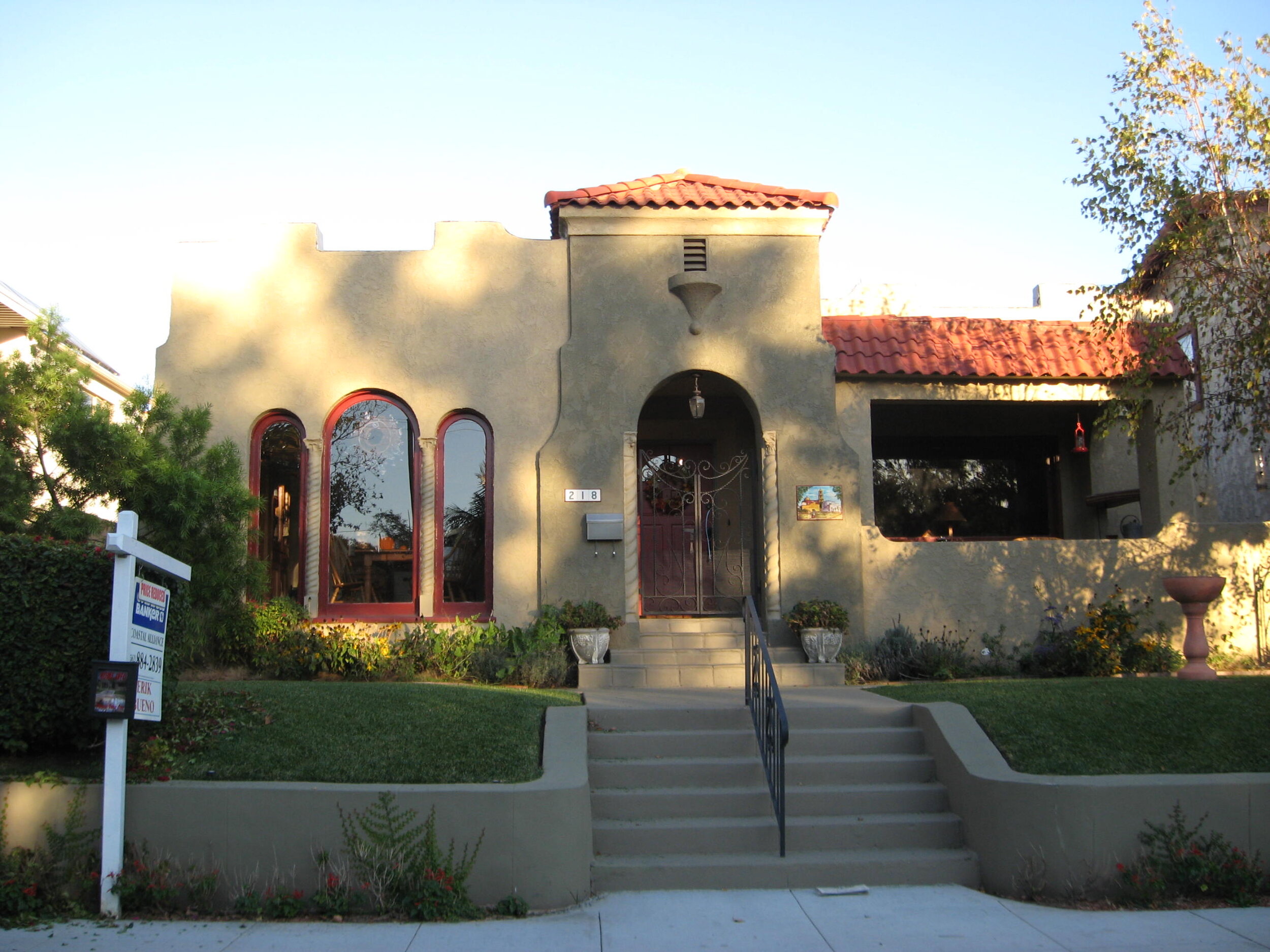Builder’s Legacy Lives On In Belmont Heights & Bluff Heights — Merton E. Cutting
We have a lot of walkers in this area of the Heights (both Belmont and Bluff). I know I prefer walking outside to a treadmill any day, and a large part of that is the interesting architecture and streetscape of our neighborhoods.
After a while, it’s easy to notice patterns in certain houses. One such pattern is what I call “falling rock.” This is not to be confused with stacked stone, which was popularized in the 1950s and is now enjoying resurgence in popularity. No, this is a pattern of pillar foundation in some of our oldest bungalow houses that used river rock in a dynamic waterfall pattern to form the base of the porch.
525 Molino Avenue
Intrigued, I found the source of this distinctive design.
Merton Elwin and Winifred Haydin Cutting must have been quite an adventurous couple. Merton was born in Middlesex County, Massachusetts in August 31, 1879, son of a farmer, and Merton learned to be a carpenter. His wife, Winfred, was born in Washington State to British immigrants.
But, the lure of California was great, and we find Merton as a land patent owner of the obligatory 160 acres in Shasta County by 1909. Mineral rights? Homestead Act? No way to know for sure, but he was definitely sampling The West. His true calling, however, became clear when he moved south to Long Beach around 1913. A quintessential contractor / developer / speculator, Cutting must have been one of the fastest builders in town, putting up a house, then living in it while building the next house. Winifred must have been a saint, for she never really settled down until her later years. Merton and Winifred had no children of record.
1914 – 1920: Nomadic Life of a Design-Builder
In 1914, Merton and Winifred lived at 56 Ocean Place and commenced building 418 Orizaba. The Orizaba house is one lot north of Fourth Street, and shares a great similarity with 3001 E. Fourth, which Cutting built later that year, while living in the Orizaba house. They even share a garage.
Once Cutting completed 418 Orizaba, he moved into 3001 Fourth Street while he built a string of houses on what was then called Dakota Avenue. (Note that in this section north of Fourth St., Dakota has since been renamed Molino [a continuation of the Molino which begins at Ocean Boulevard]. These new homes were featured in two articles in 1916 and we can learn a lot about their original features:
3001 E 4th Street
Shared garage between 418 Orizaba Avenue and 3001 E. 4th Street
Built-in Conveniences Abound in Cutting Homes
“The interiors are handsomely finished and contain practically every known built-in feature for convenience and comfort.
A 10-foot triplet window in each dining and living room affords a flood of sunshine and plenty of ventilation when desired.
Each house has a 12-foor buffet, a granite brick mantle, a built-in mission clock above the fireplace, a desk with electric light, built-in bookcases and numerous seats.
The opening between the living room and dining room is flanked with large, tapering pillars, adding a pleasing and artistic effect.
The hardware installed is of solid brass
The bath rooms are of the cabinet style and are provided with full length mirrors and other conveniences.
The living rooms are in the latest shades of light stain, with walls of light tan, while be breakfast rooms are in dainty light blue with fixtures to match.
The kitchens and laundries are amply supplied with cupboards, drawers, ironing board, drop tables and other handy contraptions.
A home on Coronado was built the following winter, in 1917, and it was remarkably similar to the Dakota homes. The attached picture shows how little has changed over the past 90+ years.
231 Coronado Avenue. This home received the Mills Act in 2017.
The Cuttings continued to live in their most recently completed house while they built the next one, selling each home as they moved out. These nomads were always within a ½ mile of their homes.
By the 1920’s, however, the popularity of the wooden California bungalow was waning.
New Architecture: The Spanish Bungalow
The Spanish Revival began in earnest as Californians embraced the romance of the Ranchos, and the state saw an influx of emigrants seeking health and wealth. This adobe sensibility was reflected in the modern architecture of the stucco bungalows cropping up around Long Beach. Cutting rode this wave, as well, by developing a second design to appeal to the desire for this modern home. It consisted of a central tower-entry, flanked by a parapet roof line. The interior followed a similar layout to the previous decade’s floor plan, but he used twisted attached pilasters to frame up the arch between living and dining areas.
218 Mira Mar Avenue
Merton Cutting died November 15, 1940, his wife on an unknown date after him while living at 127 Belmont. Although they had no children, their houses live on, continuing their legacy of ingenuity and perseverance in early Long Beach.
127 Belmont Avenue
Do you suspect you live in a Cutting home? Let me know!






